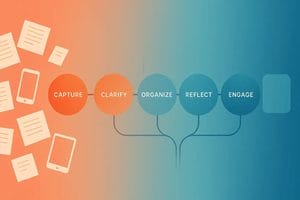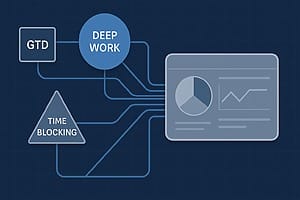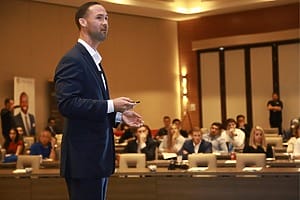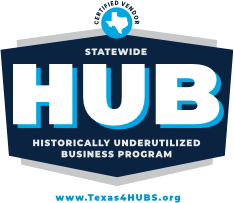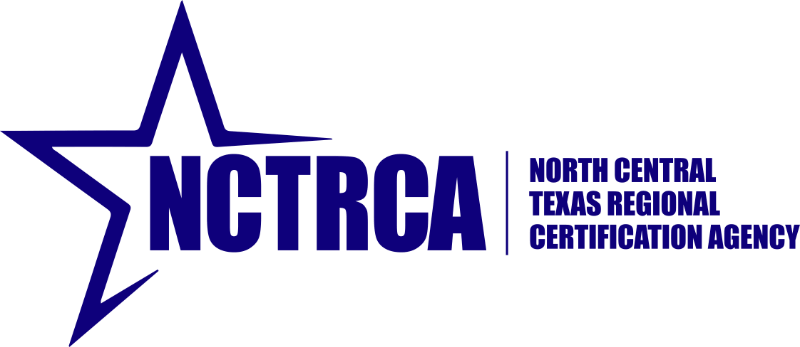Time is every executive’s most precious — and scarcest — resource. One Harvard study found CEOs in its sample worked 62.5 hours per week on average, often spilling into nights, weekends, and even vacation days . The demand on a leader’s schedule is relentless. Yet despite these marathon hours, many senior leaders feel they’re sprinting just to stand still, inundated by back-to-back meetings and urgent fires. How can busy executives reclaim their time, focus their energy, and lead more productively? This article, written from the perspective of a seasoned executive coach, explores that question. We’ll delve into proven principles of time and energy management for C-suite leaders and directors, from prioritization frameworks like the Eisenhower Matrix to managing your cognitive bandwidth. Along the way, we’ll see how executive coaching helps turn insight into action — providing the clarity, accountability, and follow-through to make lasting changes. By the end, you’ll have practical strategies to master your schedule and amplify your impact.
“What is important is seldom urgent, and what is urgent is seldom important.”
—Dwight D. Eisenhower
TL;DR;
•Time and Energy Are Leadership Fuel: It’s not just about hours worked. Managing your energy (mental and physical) is as crucial as managing your time for sustainable high performance .
•Prioritize Ruthlessly: Use tools like the Eisenhower Matrix (urgent vs. important) to focus on high-value activities.
•Protect Your Focus: Senior leaders are pulled in many directions. Limit low-value meetings, delegate when possible, and block out “deep work” time. Distractions and multitasking can drain up to 28% of a knowledge worker’s day .
•Leverage Coaching for Accountability: A skilled executive coach can help you clarify priorities, build better habits, and stay on track. No wonder one-third of Fortune 500 companies use executive coaches as part of their growth strategy .
•ROI of Better Time Management: Improving a leader’s productivity isn’t just about getting more done – it reduces burnout and lifts team performance. When combined with training, coaching can boost individual productivity by 86% and often yields over 700% ROI for organizations .
Prioritize What Matters Most (The Eisenhower Principle)
One of the core skills in time management is ruthless prioritization. As an executive coach, I often see leaders overwhelmed by workloads because everything feels important. Here’s where President Dwight D. Eisenhower’s wisdom comes in. In practice, this idea is visualized through the Eisenhower Matrix, which separates your tasks into four quadrants: Urgent-Important, Important-Not Urgent, Urgent-Not Important, and Neither. Senior leaders gain clarity when they map their endless to-do lists into these categories. For example, that strategic vision project is Important but not yet Urgent (plan time for it!), while an overflowing inbox often contains Urgent but less important items that could be delegated or deferred.
Apply it: Start each day by identifying your top 2–3 priorities — the tasks that will truly move the needle. Then scan your agenda for the “urgent but not truly important” time-stealers (lengthy status meetings, routine approvals) and find ways to minimize them. Cancel or delegate a meeting that doesn’t require your input. Empower a team member to take on a task that’s urgent but within their capability. As McKinsey advisors suggest, deciding what not to do may be the most strategic decision of all . In fact, a simple rule of thumb from productivity experts is to choose a maximum of five big things to focus on for the year and spend 95% of your time on those . Everything else gets a polite “no” or is dropped down the priority list. This kind of ruthless focus is hard in the moment — especially for high-achievers accustomed to saying “yes” to every challenge — but it pays off exponentially in impact.
Coach’s Insight: One VP of operations I coached realized he was attending over 10 recurring weekly meetings, many of which he had no clear role in. They were devouring hours of his time. Through coaching, he experimented with saying no and entrusting a deputy to represent him in less critical meetings. The result? He freed up nearly 8 hours a week to devote to strategic planning (a Quadrant II activity he’d long neglected). Within a quarter, his division launched a process improvement initiative that more than paid back the time saved.
Prioritization is about continuously aligning your time with your highest leadership responsibilities. It’s not always easy — urgent issues will still demand attention — but maintaining a clear view of what truly matters ensures that the important doesn’t get constantly overshadowed by the merely urgent. Leaders who master this skill make more progress on strategic goals and feel less “busy for the sake of busy.” They lead proactively rather than reactively.
Manage Your Energy, Not Just Your Time
Elite executives don’t just manage schedules; they manage themselves. This means taking care of energy and focus, not merely filling every hour. Back-to-back 12-hour days might look productive on paper, but what condition are you (and your team) in by day’s end? Exhaustion leads to poor decisions, irritability, and burnout. Recent thinking in leadership productivity emphasizes that time is a fixed resource, but energy is renewable . In other words, you can’t create more hours in a day, but you can optimize and replenish your energy to make those hours more effective.
Research published in Harvard Business Review underscores the mind-body connection in performance. Schwartz and McCarthy, in their classic article “Manage Your Energy, Not Your Time,” found that executives who intentionally built rituals for energy renewal (such as daytime breaks, exercise, or mindfulness practices) significantly improved their productivity and avoided burnout . Think of yourself like a corporate athlete: you need periods of intense effort and periods of recovery. Running on fumes helps no one. As a coach, I often work with leaders to audit their energy levels through the week. We identify when they are mentally sharp versus drained, and plan work accordingly. For instance, if you have a high-energy peak in the morning, that’s prime time for complex problem-solving or creative work — not for scrolling through trivial emails.
Apply it: Protect your high-energy windows for priority work. If you’re a morning person, schedule your toughest tasks in the morning and push routine duties to later. Incorporate small recharge moments in your day: a short walk to clear your head, a few minutes of deep breathing between meetings, or even standing up to stretch can reset your energy. Also, pay attention to sleep, nutrition, and exercise — the fundamentals that too many busy executives neglect. One CEO client instituted a firm rule to leave the office by 6:30 PM twice a week to have dinner with family and unwind. It felt counterintuitive given her workload, but she found that coming back refreshed the next day actually increased her output. Over a few months, her team noticed she was more present and decisive in meetings, no longer running on caffeine and willpower alone.
Leaders set the tone for their teams. By valuing work-life harmony and managing your own energy, you implicitly give permission for others to do the same. The result is a healthier, more resilient organization. Remember, burning out is not a badge of honor. As an executive, maintaining your energy isn’t indulgent – it’s part of your job. A clear head and balanced stamina enable you to handle crises and complexity far better than a depleted one. In the long run, managing energy will multiply the value of the hours you devote to work.
Protect Your Cognitive Bandwidth (Focus Beats Frenzy)
Every decision we make, every email we read, every meeting we sit through uses up a bit of our mental bandwidth. For senior leaders making hundreds of decisions a week, cognitive capacity is a finite commodity. If you allow your day to fragment into dozens of micro-tasks and constant interruptions, you’ll end up busy but not productive. Protecting your focus is key. Consider this: knowledge workers lose about 28% of their work time to interruptions and distractions . That’s roughly 11 hours a week — gone to multitasking, incessant messaging pings, or meetings that wander off-topic. For an executive, the cost of these context switches is even higher, because the problems you’re tackling require more mental heavy lifting.
Apply it: Treat your attention like the valuable asset it is. Two coaching techniques that many leaders find transformative are time-blocking and strategic delegation. Time-blocking means designating chunks of your calendar for specific high-priority work and treating those blocks as sacrosanct meetings with yourself. For example, you might block 9–11 AM daily for “strategy/thinking time” or for key project work. During these windows, you disconnect from email and chat, and you don’t accept meeting invites. It may feel strange to carve out such time at first, but as an executive coach I’ve seen clients regain immense productivity by simply scheduling appointments with their most important tasks. One technology director I worked with started blocking every Wednesday morning as “product development focus time.” After a month, he told me it was astonishing how much creative work got done on Wednesdays when he was otherwise “invisible” to the organization for a few hours.
Another crucial tactic is delegation. High-performing leaders delegate not just to offload work, but to free their mental space for what only they can do. If you’re a COO, negotiating that major partnership might require your personal touch, but crafting the first draft of next quarter’s sales deck could be a growth opportunity for your marketing manager. It’s a win-win: you develop your team and reduce your own overload. Keep in mind the coaching adage: if someone else can do it 80% as well as you, let them do it. Free your bandwidth for the strategic and exceptionally high-stakes matters that truly require your expertise.
Also, be mindful of the number of decisions you force yourself to make in a day. Decision fatigue is real. Some executives simplify their life (think of Steve Jobs’ or Mark Zuckerberg’s famously repeated outfits) to conserve mental energy for the decisions that count. While you don’t need to wear the same suit daily, you can establish routines and default choices for low-priority activities. For instance, pre-plan your weekly meal prep or stick to a standard approach for routine budgeting decisions, so you’re not rethinking those details over and over.
Finally, streamline communications. Set norms for your team about email vs. instant message vs. meeting usage. Maybe you institute “quiet hours” where no meetings are scheduled company-wide, or you encourage concise, decision-oriented meeting agendas. One McKinsey report noted that too often executives are “drained” by pointless interactions or information overload . By proactively trimming these from your workday, you safeguard your ability to concentrate on big challenges. Remember, your goal is to maximize the time you spend on high-leverage activities — those that tap your unique strengths and have significant impact — and minimize time on the rest. Quality of focus beats quantity of hours.
Clarity and Accountability: The Coaching Advantage
Even knowing all the best practices — prioritization, energy management, focus techniques — it’s easy to fall back into old habits. This is where executive coaching becomes a game-changer. A good coach acts as an objective partner dedicated to your success. In my coaching practice, I often serve as a confidential sounding board: helping leaders sift through noise to clarify what truly matters, then holding them accountable as they commit to new behaviors. The impact on time management and productivity can be profound. In fact, performance coaching is specifically aimed at improving an executive’s effectiveness and productivity . It’s no surprise that about one-third of Fortune 500 companies now use executive coaches for their top leaders .
What does this look like in real life? Imagine a Director who’s struggling to transition from a hands-on role to a more strategic leadership role. She’s working long hours, trying to attend every meeting and be involved in every decision, and she’s burning out. In our coaching sessions, we might start by defining what her highest-value contributions are (e.g. developing her team, guiding department strategy, building cross-functional relationships) and what tasks could be delegated or even dropped. We could introduce a prioritization framework and come up with a new meeting schedule that frees up focus time. Most importantly, as her coach I would hold her to her own plan — checking in weekly on how the delegation is going, troubleshooting any setbacks (perhaps she had trouble saying no to an “urgent” request from another executive), and celebrating her successes when she sticks to the new approach. Over a few months, it’s common to see executives not only manage their time better but also report feeling a renewed sense of control and purpose in their work.
Data backs up the benefits of coaching on productivity. A study by the International Coach Federation found that combining coaching with training boosts productivity by 86% compared to 22% from training alone . And beyond immediate performance, coaching creates lasting behavior change. Executives often continue applying the mindset shifts learned in coaching long after the engagement ends, whether it’s the discipline of weekly goal-setting, the habit of reflective thinking, or a more empowering way of leading their teams. According to a MetrixGlobal study, companies recouped several times their investment — an average 788% return on investment — from executive coaching due to gains in productivity and employee retention . Simply put, coaching helps busy leaders turn knowledge into action. It bridges the gap between “knowing what to do” and actually doing it consistently.
If you’re a senior leader feeling stretched thin, consider what kind of support could make a difference. Working with a professional coach isn’t about adding another meeting to your calendar; it’s about creating space to focus on you and your development as a leader. It provides a structured time to reflect, plan, and course-correct with an expert guide — something highly effective leaders like executive coaches, leadership development specialists, or organizational coaches can facilitate. Leaders often tell me that coaching sessions become a sanctuary in their week: a rare hour without interruptions, devoted entirely to strategic thinking about how to lead better and live better.
Ultimately, mastering time management and productivity is not just a “work hack”; it’s a leadership imperative. When you manage your time and energy well, you lead by example. You make better decisions and are more present for your team. You create an environment where priorities are clear, people are focused on the right things, and work-life balance is respected. This humane, high-performance approach to leadership is sustainable — for you, your business, and your people. As a leader, you owe it to yourself and your organization to maximize the impact of your time. By applying these principles and perhaps partnering with a coach to reinforce them, you can move from merely managing time to truly mastering it.
Conclusion
Senior leaders will always face intense demands on their time — that comes with the territory. But feeling perpetually overwhelmed should not be accepted as “normal.” By prioritizing what truly matters, managing your energy as carefully as your calendar, and protecting your mental focus, you can radically improve your productivity and your quality of life. Remember the key takeaways: Separate the important from the merely urgent; take care of your energy to sustain performance; and don’t try to do everything — do what only you can do, and empower others for the rest. If you find yourself struggling to implement these changes alone, consider engaging in executive coaching . The right coach will not only provide proven tools and insights, but also the accountability and encouragement to turn good intentions into lasting habits.
In the end, better time management is a means to an end: stronger results at work and a more fulfilling life. When you make the most of your time and energy, you show up as the best version of yourself for your team and organization. I’ve seen countless leaders grow from frantic multitaskers into focused, empowering executives. Their companies benefit, their teams thrive, and they personally experience far less stress. You can achieve the same. It starts with a choice to lead with purpose rather than reactively, to manage your time with the same care you manage finances or strategy. Make that choice, and seek support if you need it. Your future self — and your colleagues and loved ones — will thank you for it.
Ready to elevate your leadership productivity? Reflect on one principle from this article you can apply starting tomorrow. It might be as simple as blocking an hour for high-priority work, or as significant as enrolling in a formal coaching program. Commit to it for a few weeks and observe the impact. Mastering time management is a journey, but with the right practices (and possibly a great coach by your side), it’s one that will reward you every step of the way.
Next Steps: If you’re interested in taking your time management and leadership skills to the next level, explore resources like Executive Coaching, Leadership Development programs, or even Team Coaching for your organization. Investing in your development is one of the highest-yield uses of your time. Here’s to working smarter, leading better, and finding more satisfaction in both work and life!


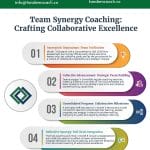
Boost Your Leadership Team Success!
Take your leadership team to the next level and achieve great results with our executive coaching.
Learn how our coaching and ASPIRE method can change things for you—get a free brochure to begin your journey.
About the Author
Cherie Silas, MCC
She has over 20 years of experience as a corporate leader and uses that background to partner with business executives and their leadership teams to identify and solve their most challenging people, process, and business problems in measurable ways.






